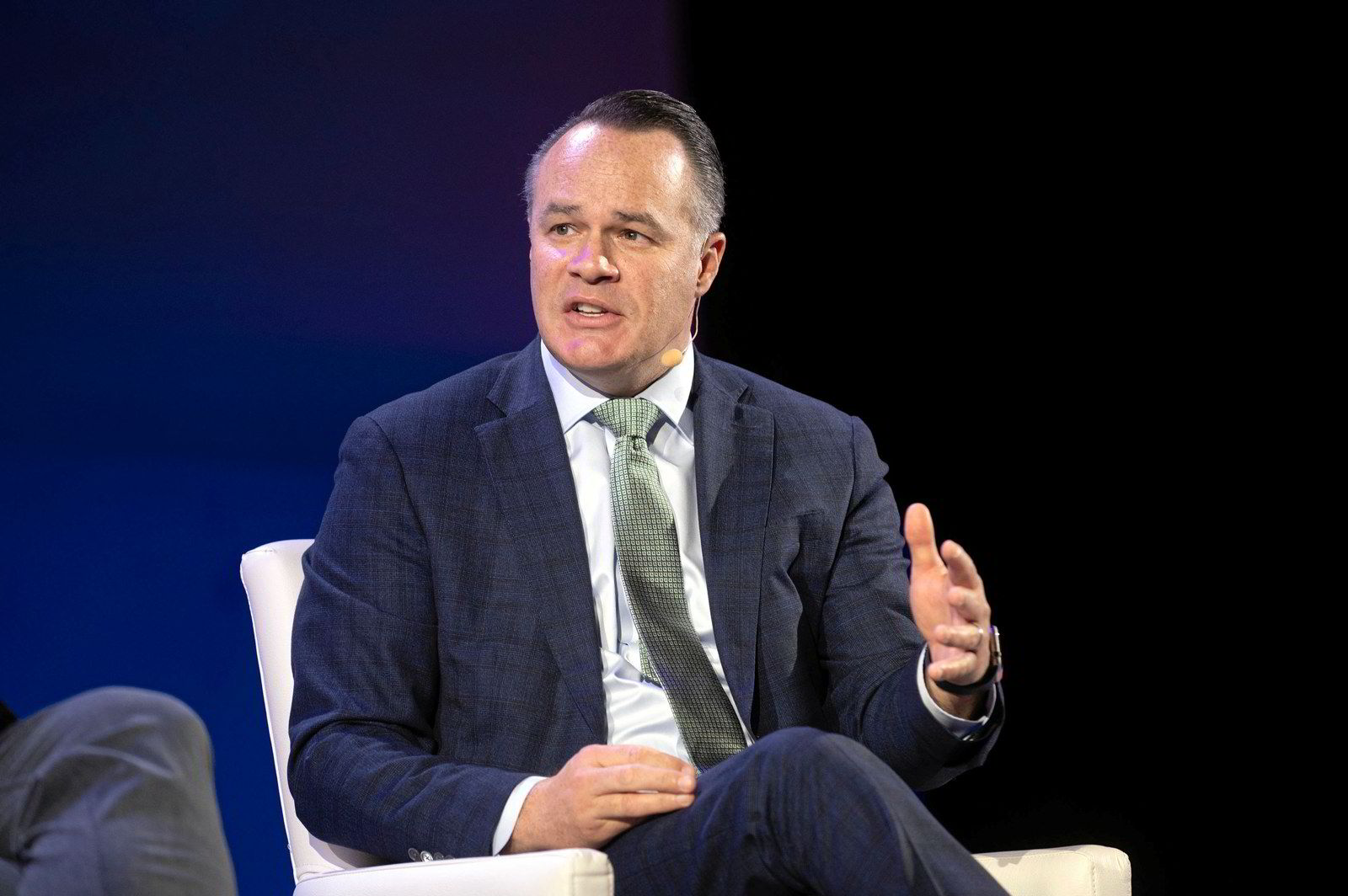‘US hydrogen tax credits would survive a Trump administration’, say well-connected lobby groups

The hydrogen production tax credits passed by Congress in 2022 would not be repealed if Donald Trump regains the presidency, according to the influential American Petroleum Institute (API) — the country’s largest oil & gas trade association and lobby group, and a significant Republican Party donor.
The 2022 Inflation Reduction Act (IRA), which legislated for the introduction of the tax credits, has proved too popular in Republican states to repeal, the CERAWeek conference in Houston heard this week — even though the Trump campaign has stated that the former president would seek to undo all or significant parts of the act.
API CEO Mike Sommers said that there were “a lot of great provisions in the IRA” that appeal to his members, including the tax credits for both clean hydrogen production (45V) and carbon capture (45Q), which can also be utilised by blue H2 projects.
“I think if President Trump is in charge, there’s not going to be a full-scale repeal of the IRA. By the way, we wouldn’t support a full-scale repeal of the IRA. I think it’ll be a much more scalpel-like approach to the IRA.”
Dan Brouillette, who was Trump’s last energy secretary and is now CEO of the Edison Electric Institute — a trade body that represents all US investor-owned power companies — added: “I think there’s a prevailing view [among Republican lawmakers] that all tax credits are good.

“We’re going to have to see how much of them are being used to actually build things… but I think, where I sit now, I cannot overstate how important these credits are as the catalyst or the incentive to invest.”
Article continues below the advert
But Sommers and other trade body leaders told the conference that the current Treasury guidelines on clean hydrogen production — which include rules on additionality, temporal matching and geographic correlation (see panel) — need to be changed.
“There’s billions of dollars from API member companies that are poised to invest in the new hydrogen economy. But that investment will stay on the sidelines if [government officials] don’t get these regulations right.”
The US treasury’s proposed guidelines on green hydrogen production, published in December, call for three requirements or “pillars” that will ensure H2 is truly green and will not lead to increased emissions: additionality, time matching and geographical correlation.
“Additionality” means that the green hydrogen would have to produced from new renewables projects, so that they do not utilise existing clean electricity facilities that would otherwise help decarbonise the power grid.
For this pillar, the Treasury wants hydrogen producers to source their power from zero-carbon projects built within three years of the H2 project.
“Time-matching”, or “temporal correlation”, relates to how frequently producers would have to prove that their electrolysers have been powered by 100% renewable energy — usually hourly, weekly, monthly or annually — and therefore to what extent they can use grid electricity at times when the wind isn’t blowing and the sun isn’t shining, and then send the same anount of renewable energy back to the grid at a later date.
Here, the Treasury is calling for renewable power to matched on an annual basis up to 2028, and then hourly from then on.
“Geographic correlation” — referred to by the Treasury as “deliverability” — relates to how physically close the hydrogen-producing electrolysers are to the source of renewable energy they use. Distances can be set to ensure that an electrolyser in, say, Texas, is not powered by solar panels in California through renewable energy credits, which in practice could mean that green power is sent to a grid that doesn’t need it, with the electricity actually used by the electrolyser coming from fossil-fuel power plants.
The US Treasury wants green hydrogen projects to be within the same regional grid as the renewable energy projects powering them.
Nuclear Energy Institute CEO Maria Korsnick also took issue with how the rules are currently implemented, particularly the rule on additionality, which would exclude current nuclear power plants from qualifying for hydrogen tax credits.
“We very much want to have the ability for plants that exist currently to also make hydrogen in addition to the electricity that they provide. Why not?” she said.
American Gas Association (AGA) CEO Karen Harbert accused the Biden administration of attempting to “reinterpret [the IRA] through regulation”. The legislation only set the emissions levels that would qualify for certain levels of subsidies, and made no mention of other qualifying criteria that has been set out in proposed guidelines by the Treasury Department.
“They only want this tax credit to apply to a certain flavor of hydrogen [ie, green], where if you really want to stimulate a market, it should be open to everything,” she told the conference.
The $433bn Inflation Reduction Act of 2022 creates a tax credit that would pay clean hydrogen producers up to $3 per kilogram (adjusted for inflation).
The size of the tax credits available to US clean hydrogen producers depends on the lifecycle greenhouse gas (GHG) emissions of each project, with a sliding scale depending on lifecycle emissions — measured in carbon dioxide-equivalent (CO2e) — of the H2 produced, including upstream methane emissions.
Hydrogen manufactured with less than 0.45kg of lifecycle CO2e emissions per kg of H2 would receive 100% of the credit, followed by 33.4% for 0.45-1.5kgCO2e/kgH2, 25% for 1.5-2.5kg and 20% for 2.5-4kg.
The lifecycle emissions would have to be verified “by an unrelated third party”, and only projects that start construction before 2033 would qualify.
The API has so far donated more than $2m to Republican groups and individuals through its political action committee (PAC) in the current election cycle, having donated more than $5m in the run-up to the 2020 election that Trump lost, according to the Open Secrets website.
The Edison Electric Institute has also donated $156,000 to Republicans in this election cycle so far, in addition to $68,000 to Democrats, through its “PowerPAC”.
The AGA’s PAC has so far donated $91,500 to Republicans in the current election cycle, and $29,000 to Democrats.
Donald Trump will be the Republican Party’s candidate in the US presidential election taking place on 5 November this year. If he were to win — and assuming he is not in jail — he would retake office on 20 January 2025.
A version of this article previously appeared on the website of Hydrogen Insight’s sister publication, Upstream.




